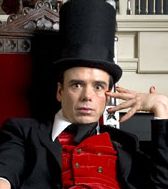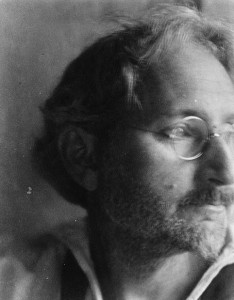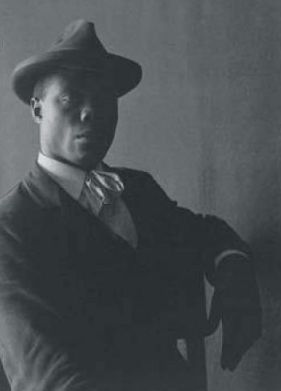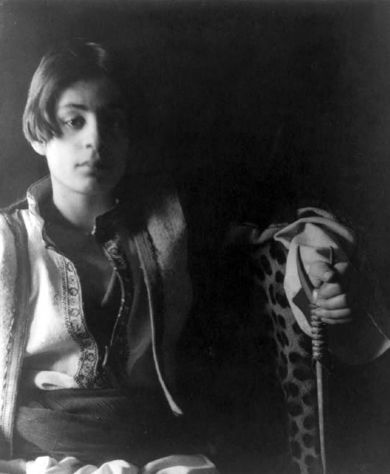 This last June, after Sebastian Horsley died in Soho at the age of 47 from a heroin overdose, I began thinking about this genre of rich wastrel louches.
This last June, after Sebastian Horsley died in Soho at the age of 47 from a heroin overdose, I began thinking about this genre of rich wastrel louches.
We in the white, waking world are fascinated by stories of Edies and Huntington Hartfords who have it all and waste it all.
Of Horsley, The Guardian put it best:
Despite his louche self-destruction–Horsley attempted his own crucifixion in 2000 in the Philippines–for the past two years he had got up at 7 am to plough up and down the local swimming pool.
…A quote that, to this day, makes me laugh: “Oh, and by the way, he attempted a self-crucifixion. But! Now about his swimming routine!”
I was struck by the similarities between him and someone else, another rich-boy aesthete with queer artistic tendencies: Fred Holland Day.

I first became acquainted with Fred Holland Day’s photography on a hot day in East Africa–Kisumu, right on the fetid, humid shores of Lake Victoria–in the British Council Library. The British Council was a quiet, blessed island of relief from the bush.
Paging through a retrospective of early 20th century photographers, my jaw dropped when I first saw F. Holland Day’s crucifixion series, and in particular this single image:
The Crucifixion Series
These were the most confusing and startling images I had ever seen. Questions abounded:
- Is this a real person or a mannequin?
- If real, could a person be this emaciated?
- What is the scale of this?
My gaze kept returning to that uplifted, delicate white left leg. This looked like an alabaster doll. Even a second view, from the side, did not yield much more information:
Not until years later did I find out about this series. The Boston Museum of Fine Arts tells us that
In 1898 Day produced his most famous body of work, an extensive series of photographs for which he played the role of Christ. His Sacred Studies, as he called them, were both widely acclaimed for their high-art aspirations and criticized as blasphemous.
Day crucified himself near his home in Norwood, Massachusetts, and a few of his neighbors pitched in to act as Roman soldiers.
Now The Aesthete-Trust-Fund Child-Pleasure-Seeker-Eccentric Part
Interested in becoming an eccentric hedonistic aesthete? It helps if your father is a rich Boston merchant and you don’t have to work a day in your life. Fred Holland Day was born during the Civil War (1864) and died during the Great Depression (1933).
While much of his work concerned scantily clad young men in pastoral situations, and though it’s a safe bet that he was gay, there is no conclusive evidence. Unfortunately, it’s mainly the homo-eroticism that Day is most remembered for.
Not only was Day a photographer, he was a publisher who helped forward the causes of photography as a fine art and of English literature. The Getty tells us
As partner in the publishing firm Copeland and Day, which he founded in 1884, Day indulged his passion for English literature, publishing exquisite small-edition, hand-bound volumes by the likes of Dante Gabriel Rossetti and Day’s friend Oscar Wilde. Although Copeland and Day published ninety-eight books and periodicals, the firm was never financially successful.
Day ranged far and wide with his subjects. Below are a few, beginning with Negro In Hat (1897):
And even a 6 year-old Khalil Gibran, who years later, would become author of The Prophet (1923):




